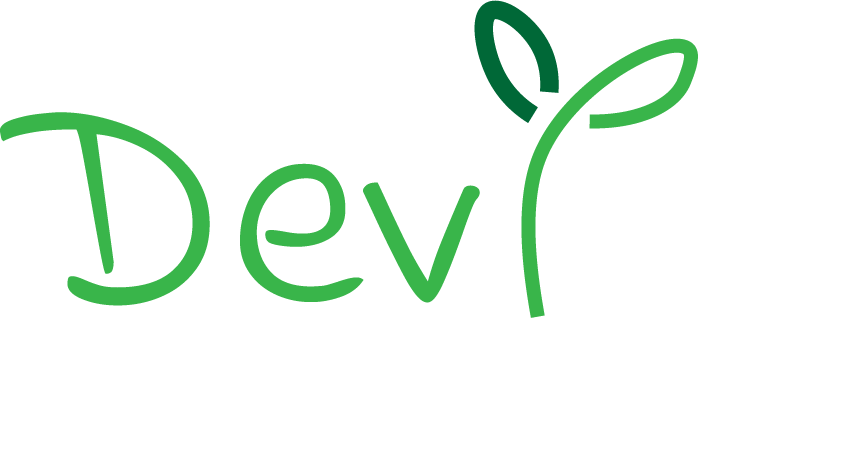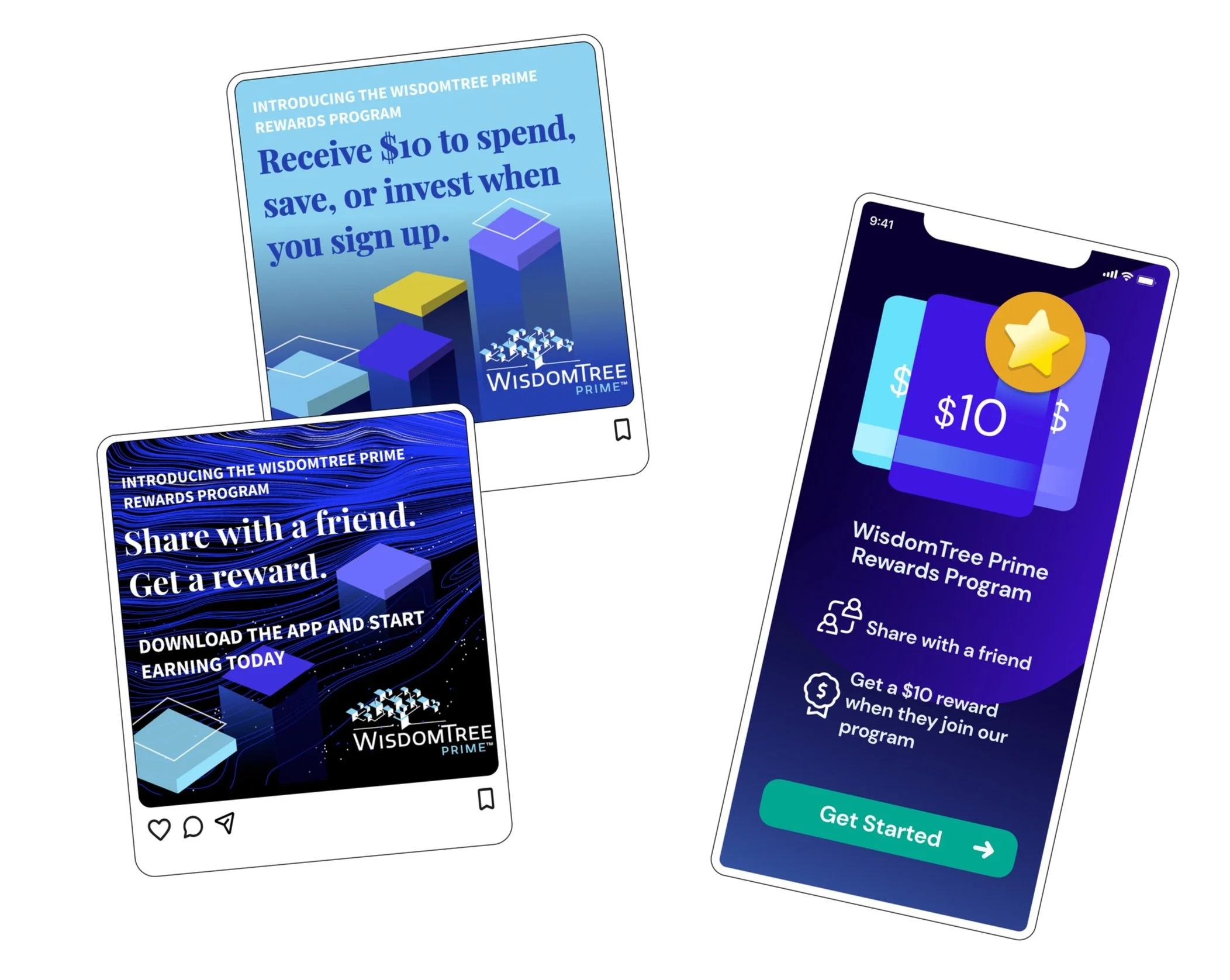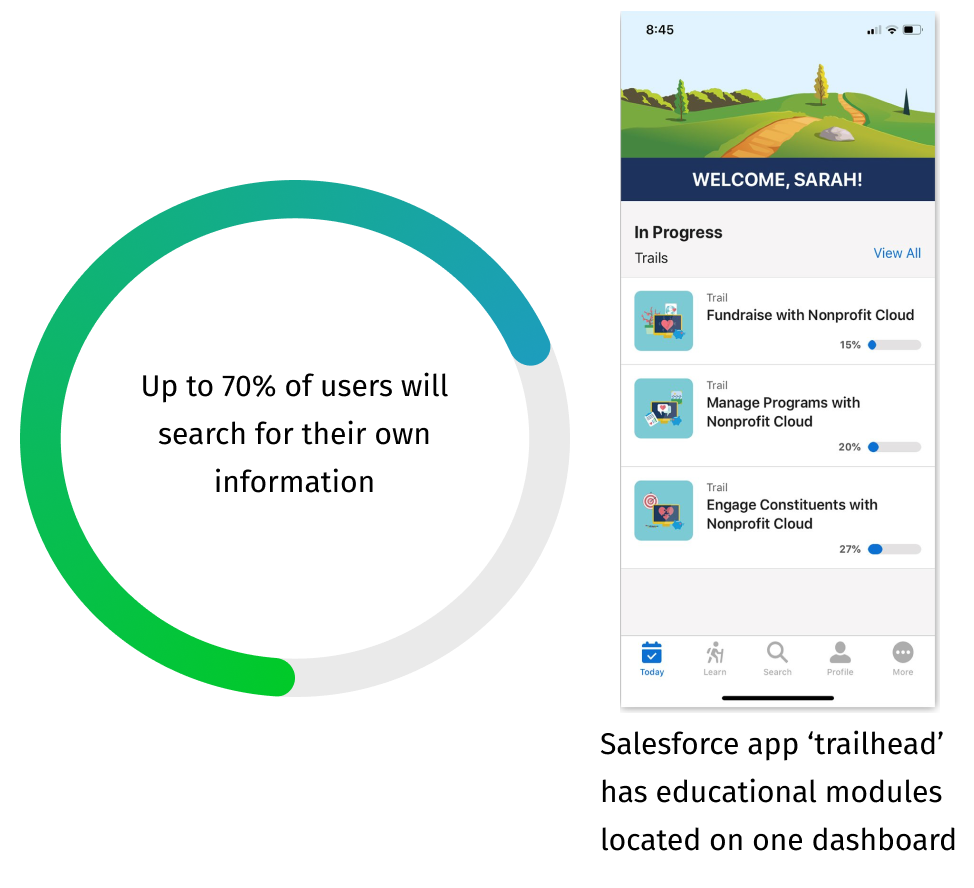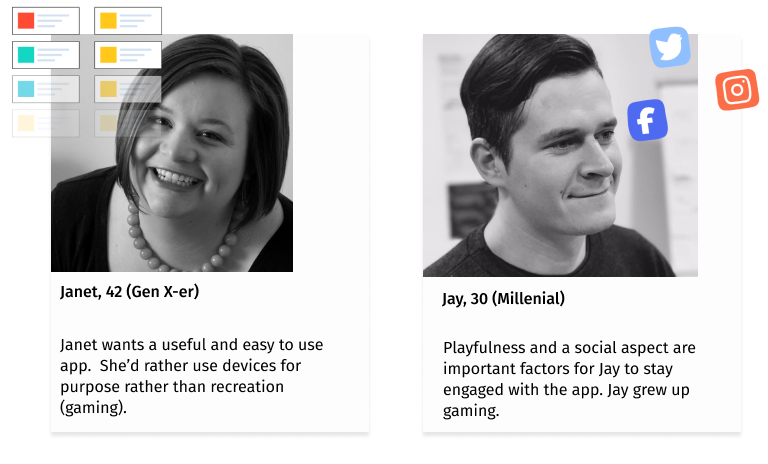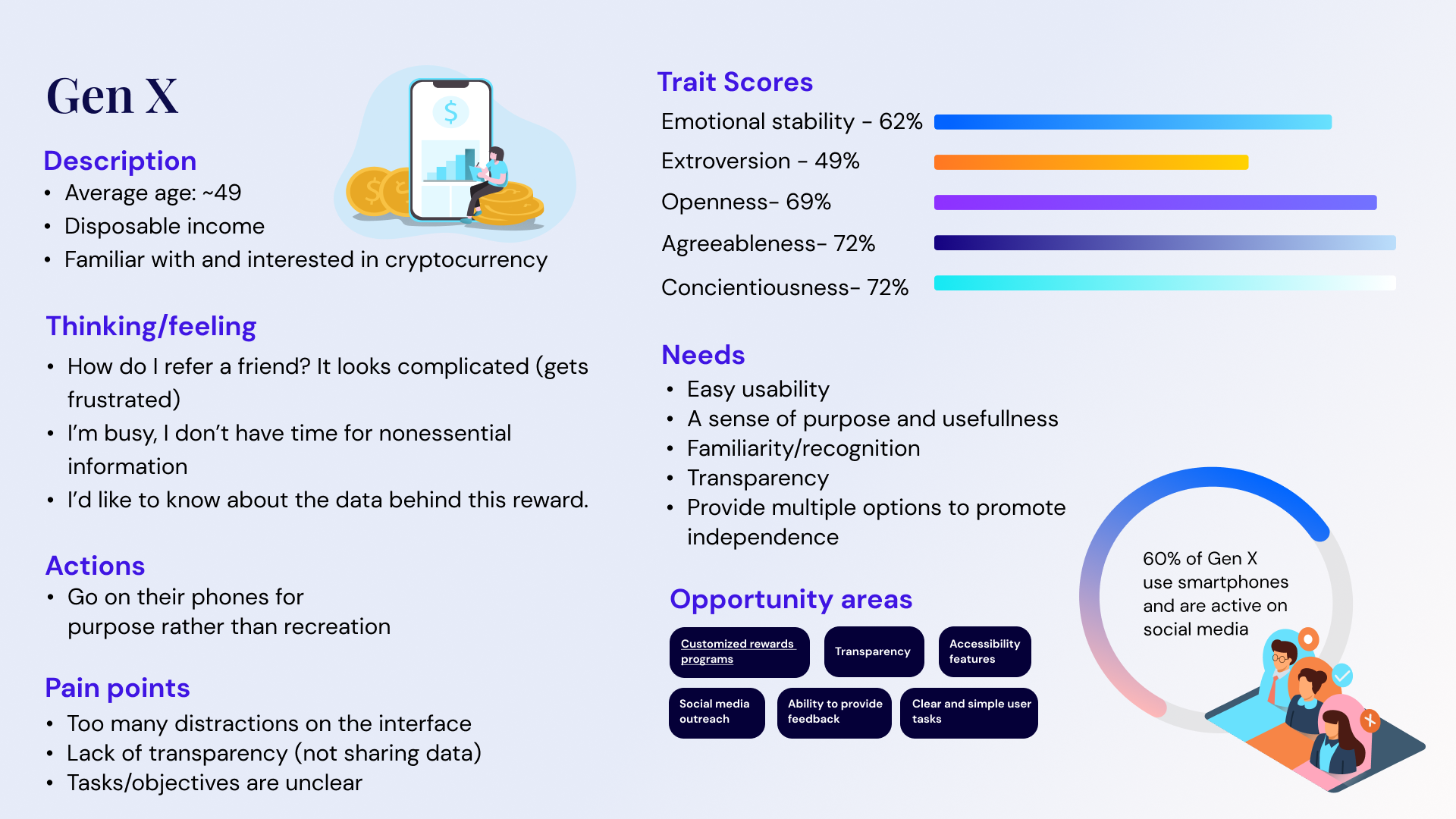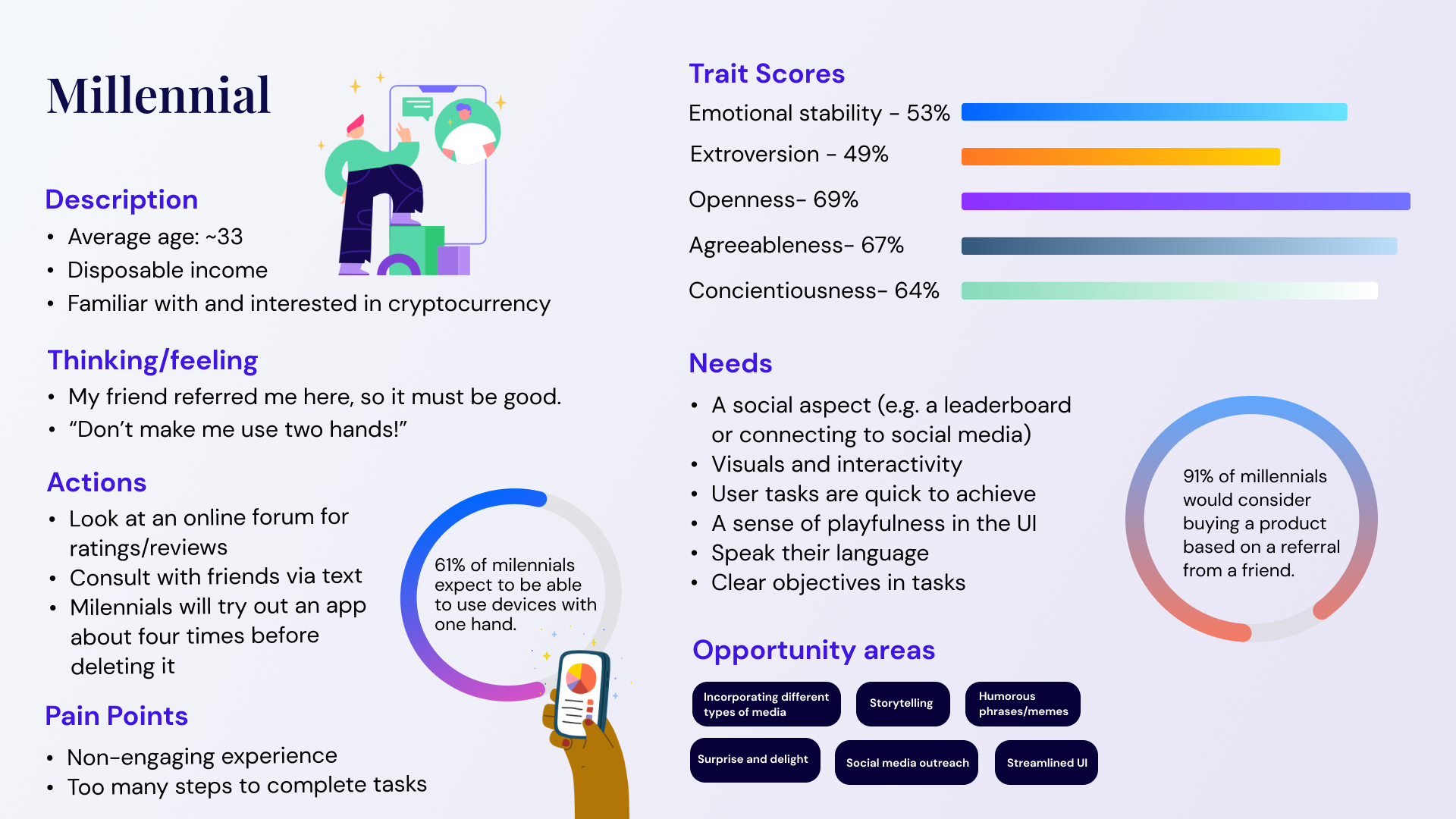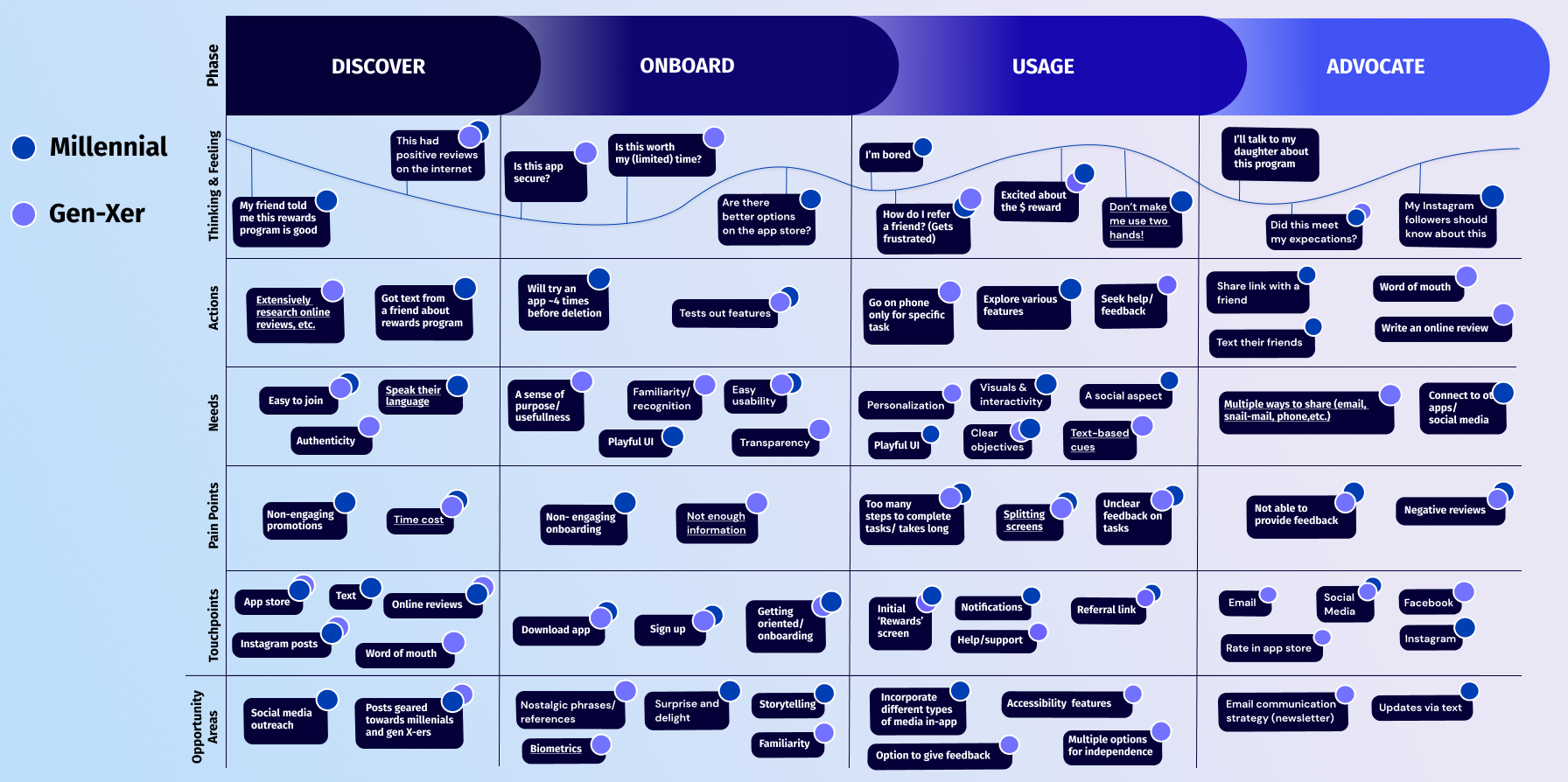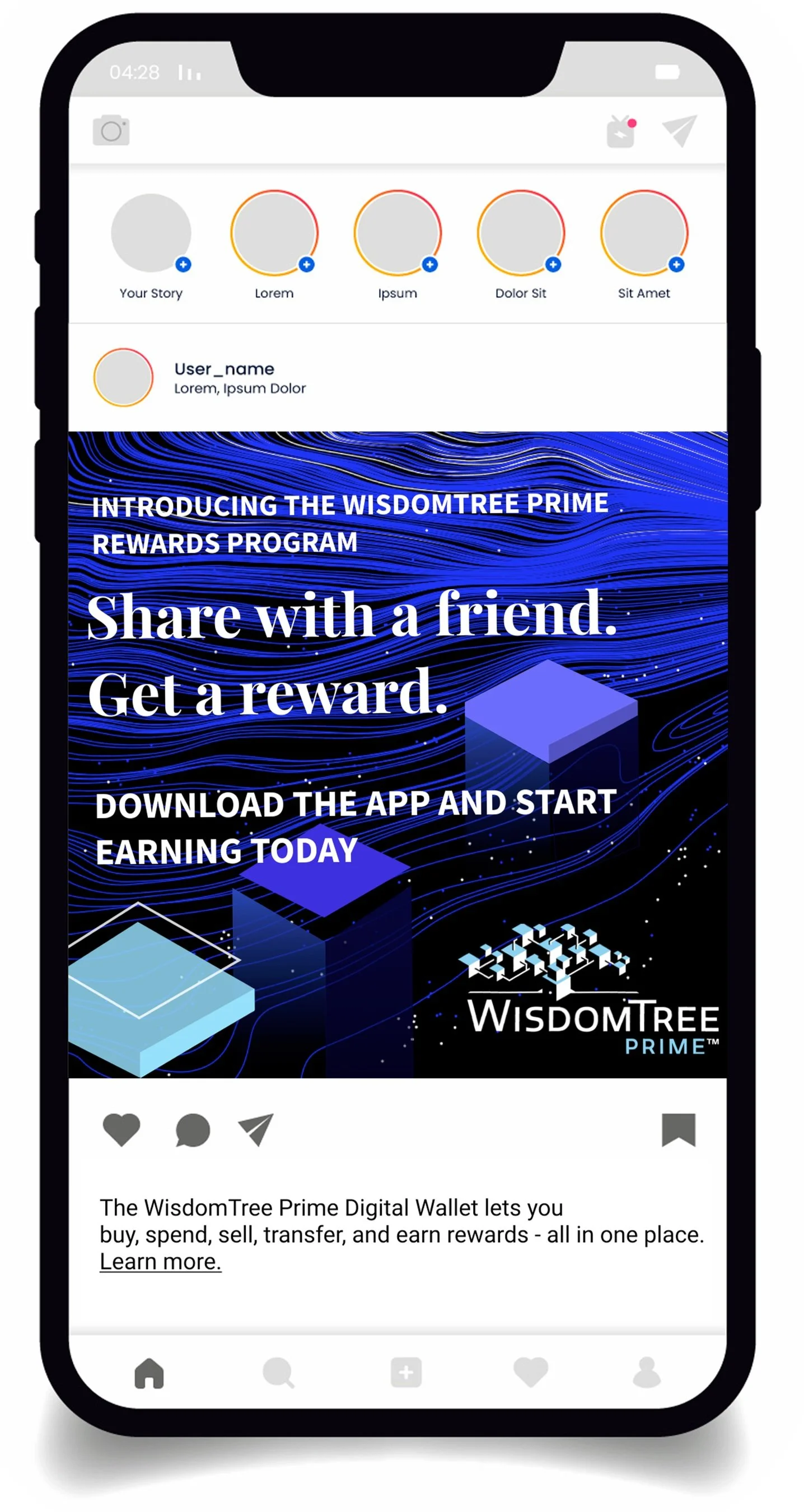Exploring the Most Effective Strategy for a Rewards & Referrals Program
Over a three-month internship, I served as an Experience Design Intern for WisdomTree Prime. I drove improvements to their rewards and referral program through user and competitor research, directly impacting the app's design and launch.
Additionally, I bridged the gap between UX and digital marketing by creating promotional content based on UX insights, with a focus on increasing account sign-ups and deposits (potential 22% and 15% boost, respectively).
The Process
Gamification Matters
Gamification adds game mechanics, where there is a continuous objective and reward.
Adding features of gamification increases user engagement and enjoyment.
Using positive reinforcement through continuous reward programs makes the user more likely to return to the program.
Approach
Giving the users the ability to educate themselves on the app rather than googling the answers keeps them on the app more and creates a sense of value.
Education, context, and paying attention to the needs of our target demographic would help us increase user engagement and promote brand advocacy while appealing to the preferences of our target audience.
User Archetypes
User archetypes were created based on user research to better understand the target demographics.
Research Insights
Combining monetary incentives with gamification is the most effective rewards driver. Ultimately, gamification has a positive impact on the user experience.
Who are our target demographics?
According to various sources, many Gen X-ers desire efficiency in the products they use, as they tend to prefer personal connections to digital stimulation.
Psychologists define personality according to five different traits- Neuroticism (emotional stability), agreeableness (ability to get along with others), openness (creativity/openness to experiences), and conscientiousness (responsibility). The theory states that all people fall on a spectrum of these five traits and every characteristic, including interest in cryptocurrency, falls under one or more of these traits.
In terms of rewards, many millennials respond well to gamification features due to growing up in a digital environment.
User Flow
I created a user flow to help understand the thought processes of the target audiences as they go through an application.
UX and Digital Marketing
Instagram Post Mockups- Millenials and Gen X
Archetypes, user journeys, and market research all played a role in shaping these posts. The mockups were influenced by key insights from user archetypes, particularly the preferences of Gen X and Millenials.
Millennials tend to prefer engaging language and visually appealing designs, while Gen X values straightforwardness, transparency, and minimal distractions.
These considerations helped inform the overall design and communication strategy to effectively resonate with both audiences.
The design for millenials features an eye-catching background and playful language, both of which are intentional choices based on user research and archetypes. Millennials, in particular, respond well to engaging and interactive posts that incorporate playful and personable elements. These decisions were made to ensure the content resonates with the target audience, enhancing user engagement and connection.
For Gen X, I chose a solid-colored background, straightforward language, and strong contrast. These decisions were informed by user research and archetypes, reflecting Gen X’s preference for transparency and a clear sense of purpose. The design aims to convey these values by minimizing distractions and focusing on clarity.
High-Fidelity Wireframes
These wireframes represent a happy flow, or best-case scenario, for the user experience. The design incorporates gamification elements, such as tokens, stars, and progress bars, to enhance engagement. To accommodate users' limited time and patience, the content is kept simple and minimal. Several accessibility measures have been implemented, including high contrast and language considerations, ensuring a more inclusive experience.
The graphics are designed to evoke the look of a wallet or a card, reinforcing the financial theme. Key visual cues, such as the green color of the "Get Started" button and the checkmark, are intentionally chosen to signify progress and confirmation. Social media integration includes Facebook and Instagram, as Facebook is commonly used by Gen X, while Instagram appeals to both Gen X and millennials—especially those with disposable income. Additionally, the frames and text interfaces mimic an iPhone, as it is widely used among the target demographic.
Lessons Learned
I gained a deeper understanding of UX design’s role in fintech, as well as the differences and overlaps between UX, digital marketing, and UI. Other key learnings included user flow best practices, creating data visualizations, and working with biometrics.
Future Plans
To take this project further, I would explore where the rewards and referrals feature would live within the app and conduct user testing, such as an A/B test, to gather insights on its effectiveness. Additionally, I would take a deeper dive into the relationship between UX and cryptocurrency and consider incorporating a credit card or wallet graphic in Instagram posts to enhance visual appeal and engagement.
